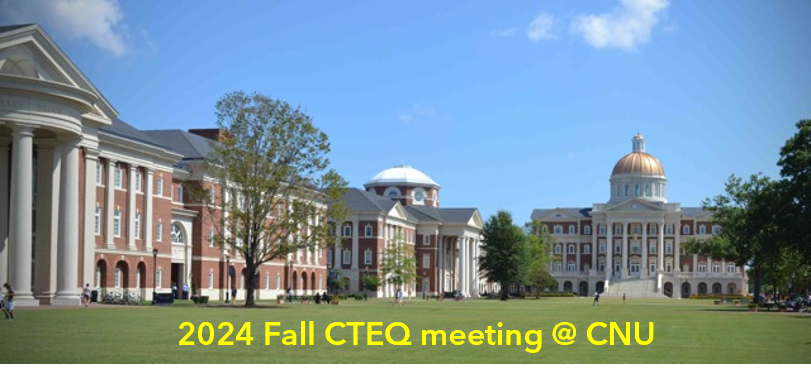We present a methodology to automate the generation of polynomial shapes for parton distribution functions (PDFs). Our recent studies demonstrate that the freedom in parametrization choice contributes a large part of PDF uncertainties. Using Bézier curves, we construct error bands for pion PDFs as a demonstration of a general approach that can be applied in other types of global analyses....
Parton shower event generators are based on approximations to what can be called a quantum parton shower evolution equation. The "quantum" designation indicates that the quantum nature of color and spin are incorporated. The splitting functions for this kind of shower evolution are currently known only to first order in the strong coupling. I will describe work to extend this to second order...
We extend the QCD Parton Model analysis using a factorized nuclear structure model incorporating individual nucleons and pairs of correlated nucleons. Our analysis of high-energy data from lepton Deep-Inelastic Scattering, Drell-Yan and W/Z production simultaneously extracts the universal effective distribution of quarks and gluons inside correlated nucleon pairs, and their nucleus-specific...
Inclusive DIS at large Bjorken is revisited to highlight the importance of tracking off-lightcone effects in the proof of factorization theorems, even collinear ones. In DIS at threshold, in particular, the relevant physics develops around two opposite light-cone directions just like in TMD SIDIS, and the Collins Soper kernel emerges as a universal function in the rapidity evolution of the...
We discuss the application of ACOT-like general mass
variable flavor number (GMVFN) schemes to proton-proton collisions with particular attention to the production of final states with at least one heavy quark. Subtraction and residual heavy-quark parton distribution functions are introduced to facilitate the implementation of this scheme at higher orders in perturbative QCD.
I summarize the recent progress on the global PDF analysis for protons and pions from the CTEQ-TEA group, with the main focus on the results published in arXiv:2408.04020.
In this talk, we introduce a new approach for parameterizing Quantum-Correlation Functions (QCFs). By treating QCFs as multidimensional images or tensors, we propose a pixel-based representation. This novel perspective offers a versatile framework for analyzing and manipulating QCFs, enabling us to leverage a wide range of image processing techniques.
We will demonstrate the effectiveness...
Nucleon structure functions, measured in lepton-nucleon scattering, are key to understanding partonic dynamics. At high parton momenta, extracting parton distributions becomes challenging due to non-perturbative effects and limited precision data. Neutron structure and d-quark distributions are particularly difficult to extract due to nuclear corrections required for deuteron-based...
I will discuss different models of uncertainty quantification when different data sets of a fit disagree and are discrepant. Specifically I will review three different models including the use of the Gaussian Mixture Model to determine uncertainties.
We will discuss some aspects of the interpretation of systematic uncertainties in global PDF analyses
